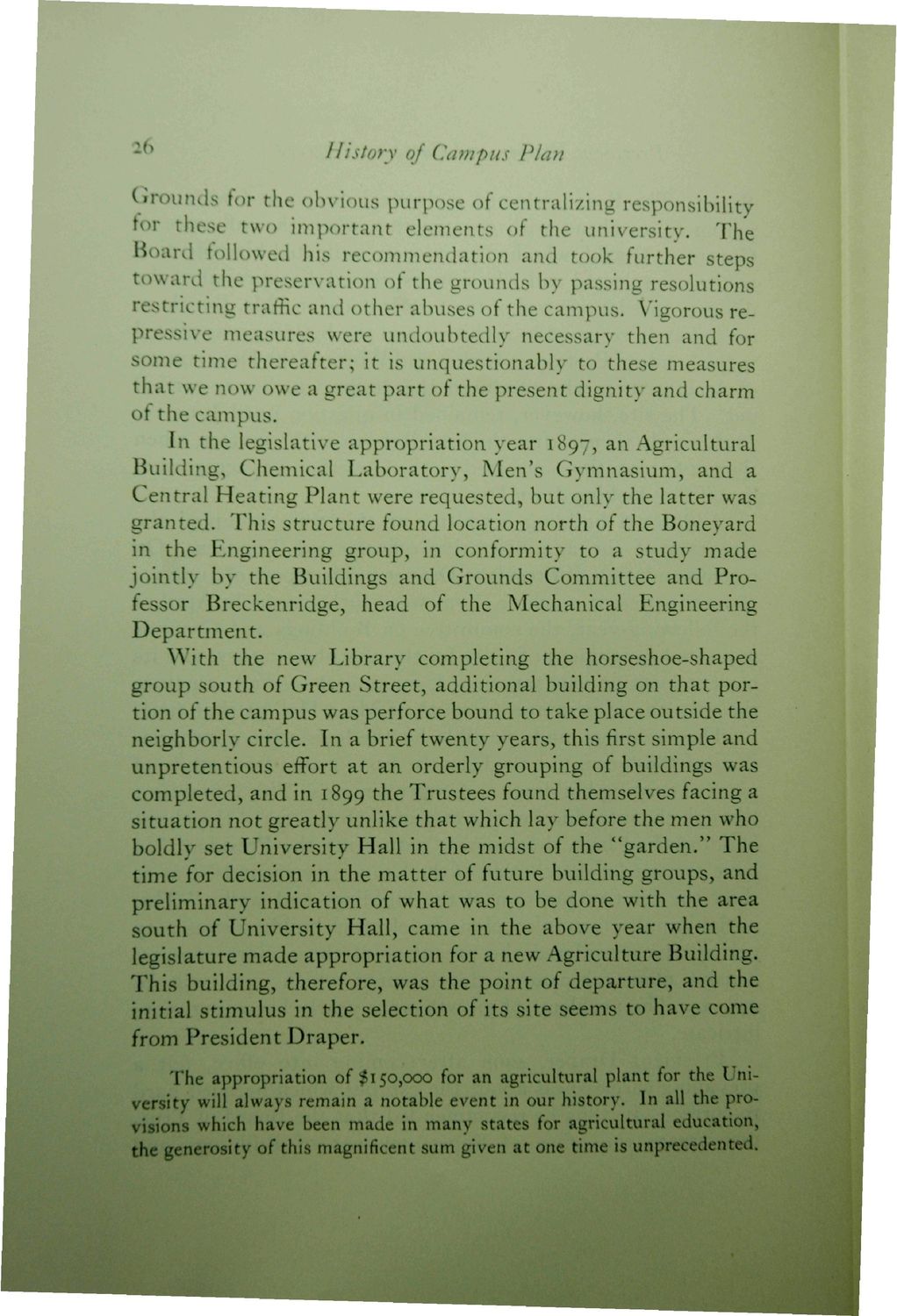| |
| |
Caption: Book - 30 Year Master Plan (Tilton & O'Donnell)
This is a reduced-resolution page image for fast online browsing.

EXTRACTED TEXT FROM PAGE:
History of Campus Plan virounds for the obvious purpose of centralizing responsibility for these two important elements of the university. The Hoard followed his recommendation and took further steps toward the preservation of the grounds by passing resolutions restricting traffic and other abuses of the campus. Vigorous repressive measures were undoubtedly necessary then and for some time thereafter; it is unquestionably to these measures that we now owe a great part of the present dignity and charm of the campus. In the legislative appropriation year 1897, an Agricultural Building> Chemical Laboratory, Men's Gymnasium, and a Central Heating Plant were requested, but only the latter was granted. This structure found location north of the Boneyard in the Engineering group, in conformity to a study made jointly by the Buildings and Grounds Committee and Professor Breckenridge, head of the Mechanical Engineering Department. With the new Library completing the horseshoe-shaped group south of Green Street, additional building on that portion of the campus was perforce bound to take place outside the neighborly circle. In a brief twenty years, this first simple and unpretentious effort at an orderly grouping of buildings was completed, and in 1899 the Trustees found themselves facing a situation not greatly unlike that which lay before the men who boldly set University Hall in the midst of the "garden." The time for decision in the matter of future building groups, and preliminary indication of what was to be done with the area south of University Hall, came in the above year when the legislature made appropriation for a new Agriculture Building. This building, therefore, was the point of departure, and the initial stimulus in the selection of its site seems to have come from President Draper. The appropriation of $150,000 for an agricultural plant for the University will always remain a notable event in our history. In all the provisions which have been made in many states for agricultural education, the generosity of this magnificent sum given at one time is unprecedented.
| |